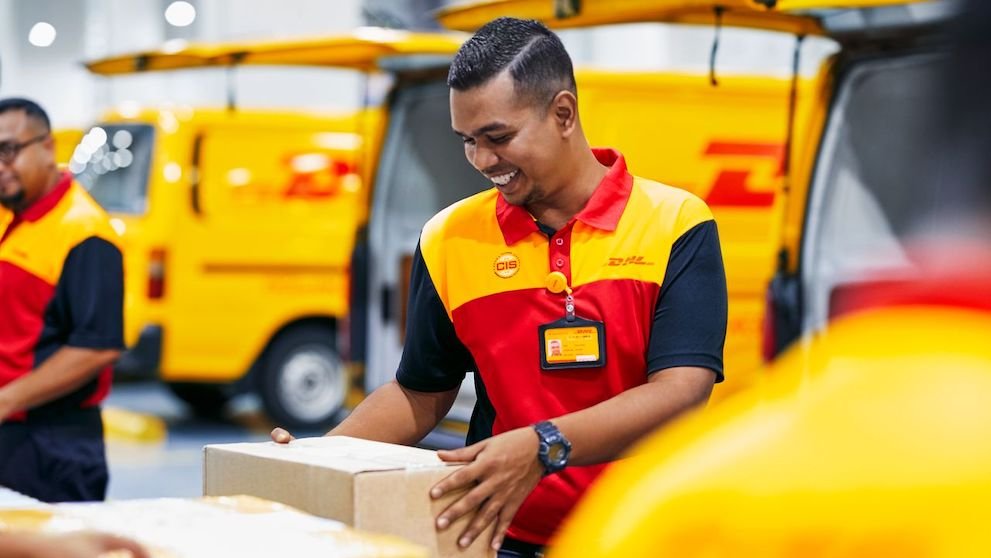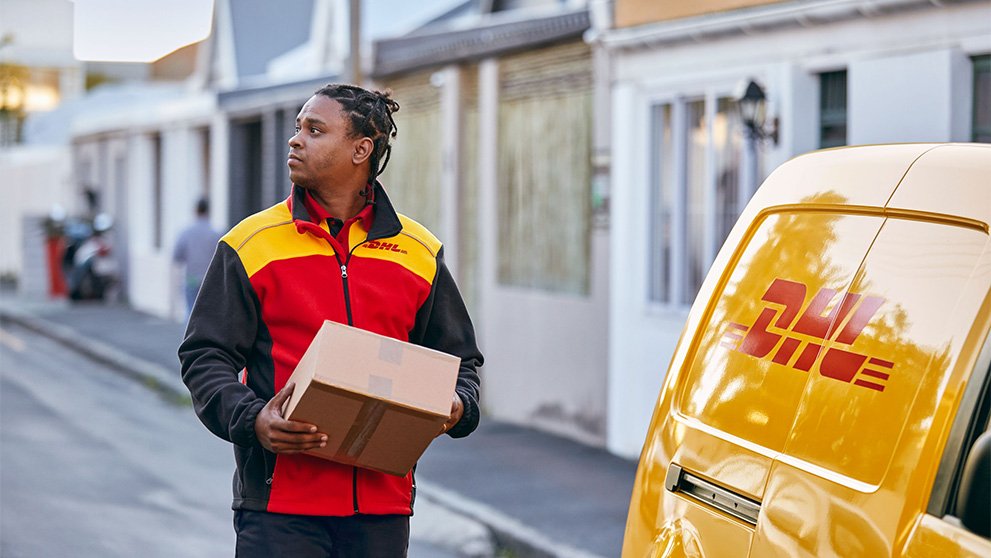DHL has made a resounding statement about the future of global trade—and it begins in the Middle East. With a $575 million investment planned across key Gulf nations, the global logistics giant is preparing to turn the region into one of the world’s most powerful trade and supply chain engines.
But this isn’t just a logistics expansion. It’s a strategic realignment that reflects how the world’s economic centers are shifting—and DHL is determined to be ahead of the curve.
Why the Middle East is DHL’s New Priority
The Middle East is no longer just a transit point between Asia and Europe—it’s emerging as a powerful trade platform in its own right. Its geographic advantage, coupled with growing digital economies, rising e-commerce demand, and ambitious government reforms, makes it ripe for investment.

For DHL, this $575 million move is about unlocking long-term growth by placing itself in the heart of tomorrow’s most vital trade corridor. With nations like Saudi Arabia and the UAE investing heavily in infrastructure, manufacturing, and technology, the region offers fertile ground for a logistics transformation.
What the Investment Covers: A Full-Spectrum Upgrade
Rather than focusing on a single service line, DHL is deploying this capital across its entire portfolio. The goal is to ensure that each logistics vertical—from express shipments to freight forwarding—is optimized for scale, speed, and sustainability.
DHL Express: Faster, Smarter, More Global
DHL Express will focus on expanding its regional hubs, building out advanced gateway facilities, and increasing air network capacity. As cross-border trade within and from the Middle East grows, speed becomes non-negotiable. This division’s expansion is aimed at reducing delivery times and improving service reliability for both businesses and consumers.
Advanced customs systems, AI-driven sorting centers, and a stronger presence at key international airports are all part of the strategy.
DHL Global Forwarding: Unlocking Trade Routes Across Continents
Freight forwarding in the Middle East is undergoing a quiet revolution. DHL is investing in digital platforms that enable real-time tracking and smarter route planning while increasing its capacity for multimodal freight.
Rail, road, air, and sea are all being integrated into seamless trade corridors that connect the region with Asia, Europe, and Africa. These networks are designed to be agile, allowing clients to shift between transport modes based on speed, cost, or disruption risk.
DHL Supply Chain: The Smart Warehouse of Tomorrow
Warehousing and inventory management are the unsung heroes of the supply chain. DHL’s investment will fuel the construction of state-of-the-art warehouses powered by automation, robotics, and real-time inventory systems.
This is especially important for sectors like pharmaceuticals, high-tech, and consumer goods, where precision, traceability, and speed are critical. Facilities will include climate control, clean room capabilities, and AI-powered fulfillment systems to support both B2B and B2C operations.
DHL eCommerce: Serving the New Generation of Online Buyers

The rise of online retail is perhaps the biggest catalyst for DHL’s expansion. The Middle East is experiencing explosive growth in e-commerce, with millions of new online buyers and thousands of digital-first retailers entering the market.
DHL plans to enhance its last-mile capabilities through local delivery partnerships, smart lockers, and urban logistics hubs. The goal is to offer same-day and next-day delivery in key cities while enabling cross-border shopping across the region and into Europe and Asia.
Sustainability at the Core of Growth
This isn’t just an investment in physical infrastructure. DHL is embedding sustainability into every element of its Middle East strategy. That includes electric delivery fleets, green building designs, renewable energy sourcing, and sustainable aviation fuel initiatives.
With the global supply chain under scrutiny for its environmental impact, DHL is responding by ensuring that its growth in the region supports global climate goals. This approach also aligns with national ambitions across the Gulf to lead in renewable energy, carbon neutrality, and green innovation.
A Boost for Regional Economies
Beyond business benefits, this investment is a major economic boost for the region. Thousands of direct and indirect jobs will be created across the logistics value chain. From skilled warehouse technicians and fleet operators to software engineers and sustainability experts, DHL’s footprint will help build the Middle East’s next generation of logistics professionals.
The company is also planning partnerships with local universities and vocational institutes to train youth in areas like supply chain tech, robotics, and green logistics—aligning workforce development with market demand.
Reinforcing Regional Trade Dominance
By expanding its capabilities across the Gulf, DHL is helping the region become a dominant player in global trade. It’s not just about exporting oil or importing goods—it’s about facilitating the full flow of commerce: from e-commerce fulfillment and pharmaceutical distribution to industrial components and tech hardware.
With improved logistics infrastructure, businesses in the Middle East can now reach global markets faster, at lower cost, and with greater efficiency. That changes the game for local manufacturers, digital startups, and international companies looking to use the region as a launchpad.
A Customer-Centric Logistics Future
DHL’s Middle East strategy is laser-focused on the customer experience. With real-time tracking, predictive delivery estimates, flexible shipping options, and personalized digital interfaces, the future of logistics will feel less like waiting—and more like control.
For consumers, that means faster deliveries, fewer delays, and seamless returns. For businesses, it means full visibility over their supply chain and the ability to pivot operations in real time based on demand, inventory, or geopolitical factors.
Building in the Right Places
Strategically, DHL is concentrating its investment in trade hubs like Dubai, Riyadh, Jeddah, and Abu Dhabi—cities that are already building the infrastructure of tomorrow. From mega-ports and free trade zones to smart cities and digital customs platforms, these hubs will host DHL’s most advanced facilities.
They are not just centers of trade; they are ecosystems where technology, logistics, finance, and innovation converge.
DHL’s Vision: From Logistics Provider to Trade Enabler

At its core, this $575 million initiative is about evolution. DHL is not just growing its footprint—it’s transforming its role in the global economy. From moving boxes to enabling borderless commerce, from delivering parcels to delivering value.
The company is betting on the Middle East not just as a logistics node but as a vital artery in the global economy. One that is young, ambitious, and ready for exponential growth.
Final Thoughts
DHL’s $575 million investment in the Middle East is more than a business decision—it’s a visionary leap. One that reflects confidence in the region’s future, recognition of its strategic importance, and commitment to a sustainable, customer-first logistics network.
With smart technology, green initiatives, and human development at its core, this expansion marks a new chapter in how the world connects, moves, and grows. The Middle East is no longer on the edge of global trade—it’s becoming the center of it. And DHL is helping build the bridge to that future.
Do follow UAE Stories on Instagram
Read More: Abu Dhabi to Host Inaugural Infrastructure Summit in June 2025













